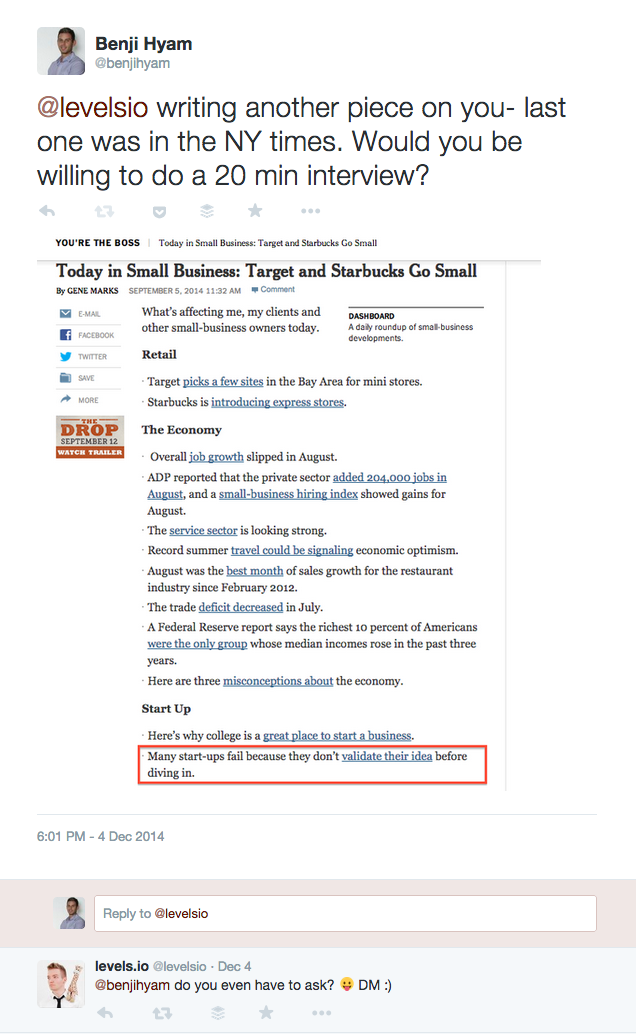If your blog isn’t getting traction you’re probably failing with at least one of two things:
- You aren’t creating valuable content.
- You aren’t distributing your content in the right places.
If you think you’re doing both of these things well but you’re still not getting traction — read further and lets try to solve this together.
For the first part in this series, let’s look at creating valuable content in more detail.
Creating Valuable Content
There are two types of content that I think need to be focused on simultaneously in order to gain traction quickly.
- Shareable content — Content that people generally find interesting and want to share with other people. This is your more viral content that is shared via social and through communities.
- Evergreen content — Content that has a long lifespan because it helps people do something. This is your content that solves a pain point and that is generally found via a search engine.
If you’re building a blog from scratch, it will be more important for you to focus on the shareable content to begin with and then as you start getting traction start weaving in some evergreen content.
If you’re a little farther down the line (lets say averaging 5–10k visitors per month), then I would say you’ll want to focus your time 50/50 on each type.
How to Create Shareable Content
There is a science behind what makes a post (or anything) go viral. I’d say it’s best outlined in Jonah Berger’s book Contagious: Why Things Catch On.
However, instead of giving you theory, I think the best way to help you is share some examples of content that i’ve had most success with. Hopefully there are themes or ideas that you can pull from these to apply to your own business.
Create Unique Content:
One reason I see so many companies and bloggers fail at content marketing (and more specifically creating valuable content) is because they’re saying the same thing that everyone else is.
Here’s the question you should be asking yourself:
‘Is there any information that is unique to me or my business that I can share with a larger audience? ‘
For some companies this might be data about an industry or about your customer base that no one else has access to.
For other companies this might mean access to a unique skill set that you can educate people on.
There’s actually a ton of things you could do to differentiate yourself. It is all about finding your unique competitive advantage in content.
Here’s an example of what I did:
At Thinkapps, I was tasked with growing blog traffic to 20,000 unique visitors in a month’s time. In order to be able to do this, I had to figure out what unique resources we had access to.
We provide an on-demand service for app development. Our business model is that we develop long term partnerships with the best app design and development firms all over the world, and manage our clients projects from start to finish.
So what does our business have access to that few other companies do? A ton of high-quality design + development talent.
After the Apple Watch announcement in September, we reached out to 10 of our design teams to have them create concept designs of what popular apps would look like on apple watch.
This Apple Watch post that I wrote got 19,000 pageviews in a week and was picked up by publications like 9 to 5 mac, Gizmodo, LayerVault, Paris Lemon, etc.
Tell stories:
If you’re a business, chances are there are lots of interesting stories you can tell.
You can tell the story behind the vision of your company. You could tell the story about how you had success with something, or how you failed at something. You could tell the stories of your clients for them. Or you could tell a story about someone that is in your target market that’s doing something extraordinary.
Bottom line is that people love stories. And contrary to popular belief, positive stories are the ones that are shared more often than negative ones. The above examples are just some ideas of stories you can tell, but i’m sure you can come up with better ideas than those.
Here’s an example of a story I created about someone in my target market that’s doing something extraordinary:
I came across Pieter Levels from a story on GrowthHackers. I was intrigued by what he was doing, so I decided to write a story about him. I posted the story to LinkedIn, and from there the blog NextShark reached out to me and asked to syndicate the post.
Later that week, the story was picked up by the NY Times, and from there the story went viral. It ended up being seen by over 100k people.

The virality of this story told me something: people think this content is interesting. So after having some success with this post, I decided to reach out to Pieter to see if he’d be willing to do an interview with me.

I had one of our freelancers Tricina craft a story from the interview about how Pieter was able to successfully launch 12 startups in 12 months. And the story took off.

The big learning was that people love stories- especially if they’re about people that they aspire to be like.
So i’ll leave you with a question:
What interesting story can your business tell?
Opinion Articles on a Trending Topic:
This is typically what media outlets do, and it may or may not work for your business.
The key for this type of content is to write something intelligent and timely. In my opinion, the best person to write this type of content is the founder of a company because he or she usually has the best pulse on what’s going on in an industry.
If your content resonates, it’s likely to be shared a ton. And if your content causes a lot of distaste with your audience, it also has the potential to go viral (however the result of this might be negative for your business).
Examples of this being done well:
Being that this isn’t my writing style or an approach that I typically take, i’m going to highlight some other people who I think do this well.
Rand Fishkin is the Founder of Moz. He shares his opinion regularly about what’s going on in the SEO industry. As a result, it generates a lot of buzz and authority through content.

Another example of someone who writes this type of content extremely well is Benedict Evans. In his own words, “I try to work out what’s going on and what will happen next in mobile, tech and media.” As a partner at a16z his blog builds authority and attracts a wide audience of founders to the firm.

This type of content is not only shareable but also typically generates lots of conversation via social and through blog comments. And here’s an example of it working:
@sama 2/2 If I were looking for capital, I would go to @a16z first b/c I feel I know the partners, even though we’ve never met — Matt Chandler (@matt_chandler) January 22, 2015
I’m hoping by now you have a bunch of ideas for how you can create shareable content. Now lets take a look at creating evergreen content.
How to Create Evergreen Content
Evergreen content is typically content that is found through search and gets steady traffic over time. It’s not to say that evergreen content can’t be shareable content as well, however typically evergreen content is written with the goal of helping someone accomplish something — in other words: solving a problem they may have. The best way i’ve found to do this from a business perspective is to answer customer’s questions. H/T Marcus Sheridan. As a marketer or someone running content for an organization, the best way to do this is: A. Work with sales to get a feedback loop of common questions that are asked on prospect calls — chances are if one person has a question, there are multiple people wondering the same thing as well. B. Get in the mind of your consumer, and try to figure out what questions people have that aren’t being answered online (to do this, i’ll show you an easy hack below). Targeting keywords for blog content will only get you sub-par content that is in a very competitive landscape. Why? Because targeting keywords doesn’t match how a consumer searches for information. Think about the last time you needed something. Did you type in the: Keyword: “content strategy” or Phrase: “how to create content that gets customers” Chances are you typed in the phrase or specific question, and you were looking for someone online to answer it for you. By focusing on this strategy to create valuable evergreen content, you’ll come up in the search results when your prospects are searching for answers to their problems. If you invest in creating compelling content, you’ll build trust with your audience and influence their decision making when it comes time to purchase.
The Suggested Search Hack
If you have a hard time getting sales on board with writing down questions they receive on prospect calls- there’s another way you can get common questions. Google.

If you go to Google and type in a question you think your audience might have, Google will suggest the most commonly searched phrases. If you look in the search results and see that no one has created content around a specific search term, chances are that you will be able to rank pretty easily in search if you were to write a blog post answering the question that people have when they are searching. So for more clarity: If I were to write a post titled “How to create sharable content” and share how to do this, chances are I would be able to rank pretty easily for this exact phrase. Updated: Rand Fishkin also wrote this great post on using wildcards in suggested search
What’s Next?
I hope I helped you get some ideas for creating valuable content that will get you and your business traction. However writing valuable content is only step 1 in the process. If you just write content, chances are it’s going to get lost in the millions of other pieces of content online. The bigger challenge that businesses have is getting content found by their audience. Most people just use their social networks for distribution, but that’s not enough anymore. In the next piece in this series I’ll cover distributing your content for traction. Part 2 is now live: Distribution Tactics I Used to go from 0 to 20,000, Real Quick.
Interested in getting one-on-one help with your content marketing strategy? Request a call below via Clarity.
Please share this with your employees, team or anyone you think might find this post valuable.
Feel free to tweet me your feedback at @benjihyam
(Due to feedback from my readership, I decided to change the title from Why Your Blog Isn’t Getting Traction to How to Create Valuable Content That Engages Your Audience)
